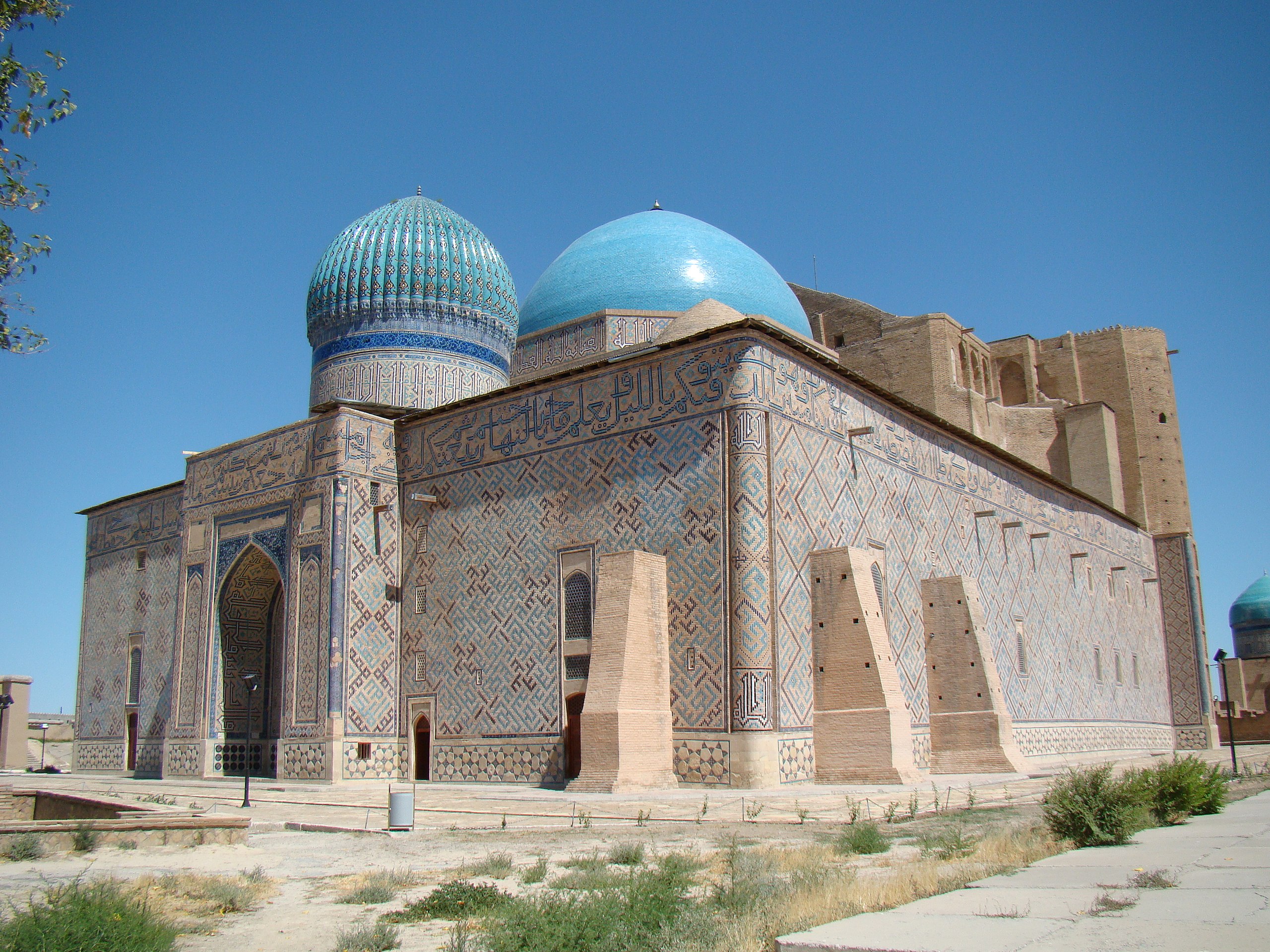The great mausoleum built by Amir Temur in Turkistan — a 600-year-old truth unfolds before your eyes
🔴 The opportunity to see the Yasawi mausoleum — at the Center of Islamic Civilization!
🔴 A symbol of spiritual unity and architectural flourishing

A model of the mausoleum of Khoja Ahmad Yasawi is planned to be displayed in the exhibition of the Center of Islamic Civilization in Uzbekistan. This model is not a mere exhibit, but a symbol representing an entire era’s religious and spiritual life, the architectural flourishing of Amir Temur’s time, and the spiritual unity of Turkic peoples.
Khoja Ahmad Yasawi and his legacy
Khoja Ahmad Yasawi (1103–1166) was one of the prominent figures of Sufism, a great mystic who spread Islamic and spiritual ideas widely in the language of the people through his work Hikmats. His grave is located in the ancient city of Yassi (today’s Turkistan, Kazakhstan). In the 12th century, a small mausoleum existed there, but at the end of the 14th century, the great commander Amir Temur (1336–1405) ordered it to be turned into a grand shrine and an architectural-memorial complex.
 According to sources, construction began in 1385–1389 and continued until 1399. Temur brought the most skilled architects and craftsmen to the site. However, after his death in 1405, the large portal and some parts of the interior remained unfinished.
According to sources, construction began in 1385–1389 and continued until 1399. Temur brought the most skilled architects and craftsmen to the site. However, after his death in 1405, the large portal and some parts of the interior remained unfinished.
Architectural structure
The mausoleum was built in a rectangular shape, measuring 62.7 meters in length, 46.5 meters in width, and reaching a height of 38.7 meters. Its total area is 0.55 hectares. Historical sources note that the mausoleum contained 34–37 rooms, including a burial chamber, mosque, library, dining hall, khanqah, and other chambers. Thus, it served not only as a burial place but also as a religious-educational center.
The central hall, called Kazandyk, is square-shaped, measuring 18.2 × 18.2 meters. It is covered with one of the largest brick domes in Central Asia. Later, this dome served as a model for major structures in Samarkand and other cities.
At the center of the hall stands the famous Taykazan. This ceremonial vessel was cast in bronze in 1399 by the Tabrizi craftsman Abd al-Aziz ibn Sharaf al-Din Tabrizi. It measures 2.45 meters in diameter, 1.6 meters in height, weighs over 2 tons, and has a capacity of 3,000 liters. The Taykazan was used in religious ceremonies to distribute sacred water. Today, it is still preserved inside the mausoleum and is valued as one of the finest monuments of the art of metal casting.

Ornamentation and inscriptions
The exterior of the mausoleum represents a supreme example of Timurid architecture. Its grand portal impresses with its height. The walls and domes are decorated with glazed bricks in blue, turquoise, and white colors. Qur’anic verses are inscribed in Kufic and Thuluth scripts. Inside, stucco muqarnas, ornamental patterns, and mural paintings have been well preserved to this day.
Political and religious significance
The mausoleum of Khoja Ahmad Yasawi was not only a religious shrine but also a symbol of the political power of the Timurid state. Through this monument, Amir Temur presented himself as a patron of Islamic values, establishing strong ties with the Sufi community and the wider public. At the same time, it served as a spiritual center uniting the Turkic peoples.
Restoration and preservation efforts
Over the centuries, the mausoleum has undergone several restorations. In the 16th century, during the reign of Abdullah Khan II of Bukhara, the portal was reconstructed. In the 19th century, during the Kokand Khanate, further restoration works were carried out. In the 20th century, the Soviet government placed the site under state protection and initiated scientific restoration projects. In the years of independence, the government of Kazakhstan has also given great attention to the complex, ensuring regular restoration and research efforts.
Current status
Today, the mausoleum of Khoja Ahmad Yasawi is located in the city of Turkistan, Kazakhstan, and is part of the “Azret Sultan” State Historical and Cultural Reserve. In 2003, it was inscribed on the UNESCO World Heritage List. Thus, it has been recognized as a monument of not only regional but also universal importance.
The mausoleum of Khoja Ahmad Yasawi is not merely a structure built over the grave of a great Sufi but a monumental embodiment of the political power of Amir Temur’s era, religious and spiritual flourishing, and the unity of the Turkic peoples. Its placement as a model in the exhibition of the Center of Islamic Civilization in Uzbekistan is by no means accidental. Through it, visitors will gain a fuller understanding of Khoja Ahmad Yasawi’s personality, the architectural grandeur of the Timurid period, and this priceless heritage recognized on an international scale.
Husan Tursunov
P/S: The article may be used by citing the official website of the Center.
Most read

Over 100 experts from more than 20 countries of the world are in Tashkent!

President of Serbia Aleksandar Vučić visited the Islamic Civilization Center in Uzbekistan

The Center for Islamic Civilization – a global platform leading towards enlightenment











